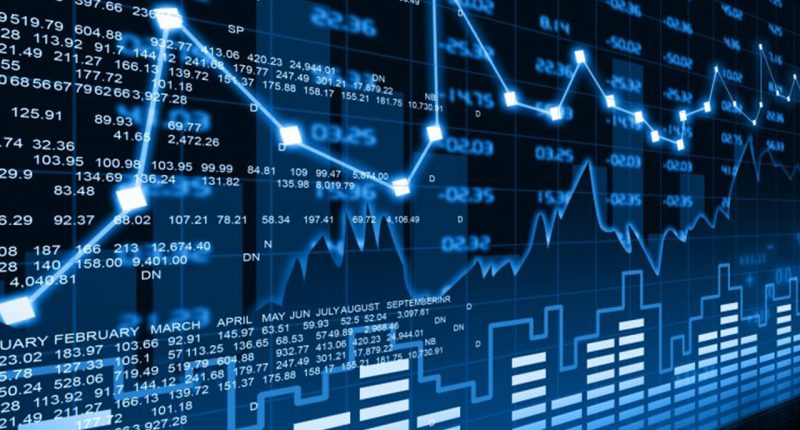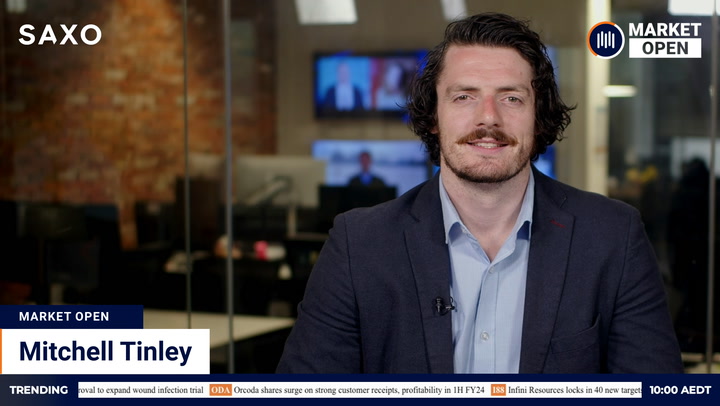The ASX looked set to open higher as a dive in the dollar helped offset a sell-off on Wall Street after the Federal Reserve surprised investors by bringing forward rate rises.
The US central bank signalled a majority of decision-makers expect to raise its key rate twice in 2023. US stocks sold off with bond markets as yields and the greenback surged.
ASX futures weathered the turbulence, rising seven points or 0.1 per cent as the dollar dived towards 76 US cents. A weaker dollar is considered broadly supportive of Australia’s export-driven economy.
Wall Street
US stocks declined but finished well off session lows in volatile trade as investors absorbed the shifting policy outlook.
The blue-chip companies of the Dow Jones Industrial Average took the biggest hit, falling as much as 382 points before finishing 266 points or 0.77 per cent lower. The S&P 500 halved its initial fall to 23 points or 0.54 per cent. The Nasdaq Composite shed 33 points or 0.24 per cent.
In one of the most anticipated Fed meetings in recent years, the bank left its key rate and bond-buying program on hold, but sprung a bearish surprise on investors expecting the era of easy money to continue well into 2024. Updated projections showed a majority of board members expect rates to rise twice by the end of 2023.
“This is not what the market expected,” James McCann, deputy chief economist at Aberdeen Standard Investments, told CNBC. “The Fed is now signalling that rates will need to rise sooner and faster… This change in stance jars a little with the Fed’s recent claims that the recent spike in inflation is temporary.”
Equities recouped some of their losses as Fed Chair Jerome Powell tried to soothe market jitters. Powell said the “dot plot” projections should be taken with a “big grain of salt“. He insisted rate raises remained “well into the future”.
“You can think of this meeting that we had as the ‘talking about talking about’ meeting,” Powell said. “We will provide advance notice before announcing any decision to make changes to our purchases,” he added.
The Fed raised its headline inflation expectation for this year a full ten basis points from 2.4 per cent back in March to 3.4 per cent. At the same time, the bank repeated its mantra that this year’s jump in inflation will be “transitory”.
The yield on ten-year US treasuries surged more than six basis points to 1.563 per cent.
Australian outlook
A tricky session coming up, with jobs data and a Reserve Bank speech on tap, and a cold wind blowing from the US partly offset by supportive currency movements. Wall Street was still working through how it felt about last night’s Fed news when the closing bell rang. US futures will carry more weight than usual this session if they move strongly in either direction.
The greenback flew higher in response to the new timetable for rate increases, sending the Australian dollar down 1 per cent to 76.09 US cents. That is good news for exporters, bad for importers and companies with significant overseas earnings or which report in US dollars.
The Reserve Bank loves a weak dollar. Governor Philip Lowe is due to deliver a speech at 10.10 am AEST on the recovery. Unless he springs a surprise, Australian government bond yields seem certain to follow US yields higher.
Rising borrowing costs are a particular problem for companies dependent on borrowing to fund growth. Improving yields also dull the appeal of utilities, consumer staples and other sectors that compete with bond markets for investment flows.
US utilities fell 1.49 per cent overnight. Consumer staples shed 1.24 per cent. Consumer discretionary was the only sector to advance, rising 0.16 per cent. The financial sector dipped 0.14 per cent. Materials declined a chunkier 1.17 per cent.
The session ahead also brings the May employment report at 11.30 am, expected to be the first to show the impact of the withdrawal of JobKeeper support. Economists surveyed by Bloomberg expect the unemployment rate held steady at 5.5 per cent as the economy added around 30,000 new positions.
The flood of IPOs continues today with two companies slated to debut: Flynn Gold and Gefen International.
Commodities
A rampant US dollar sent gold sharply lower. Metal for August delivery settled $5 or 0.3 per cent ahead at US$1,861.40 an ounce before the Fed policy update, then tumbled in its wake. The contract was lately down $44.30 or almost 2.4 per cent at US$1,813. The NYSE Arca Gold Bugs Index fell 1.79 per cent.
BHP and Rio Tinto sold off in US trade following a flat session in Europe. BHP’s US-listed stock slumped 1.47 per cent after its UK-listed stock dipped 0.09 per cent. Rio Tinto gave up 2.04 per cent in the US after inching up 0.1 per cent in the UK. Iron ore at Qingdao fell $7.79 to US$214.08 a tonne.
Oil followed the same path as gold and other metals: up pre-Fed, down immediately after. Brent crude settled 40 cents or 0.5 per cent ahead at US$74.39 a barrel. The August contract was last down 49 cents or 0.66 per cent at US$73.90.
Copper rebounded ahead of the Fed update, then gave it all back as the greenback rallied. July copper was lately down 1.5 per cent at US$4.27 a pound after settling 1.2 per cent higher at US$4.39 on Comex.







